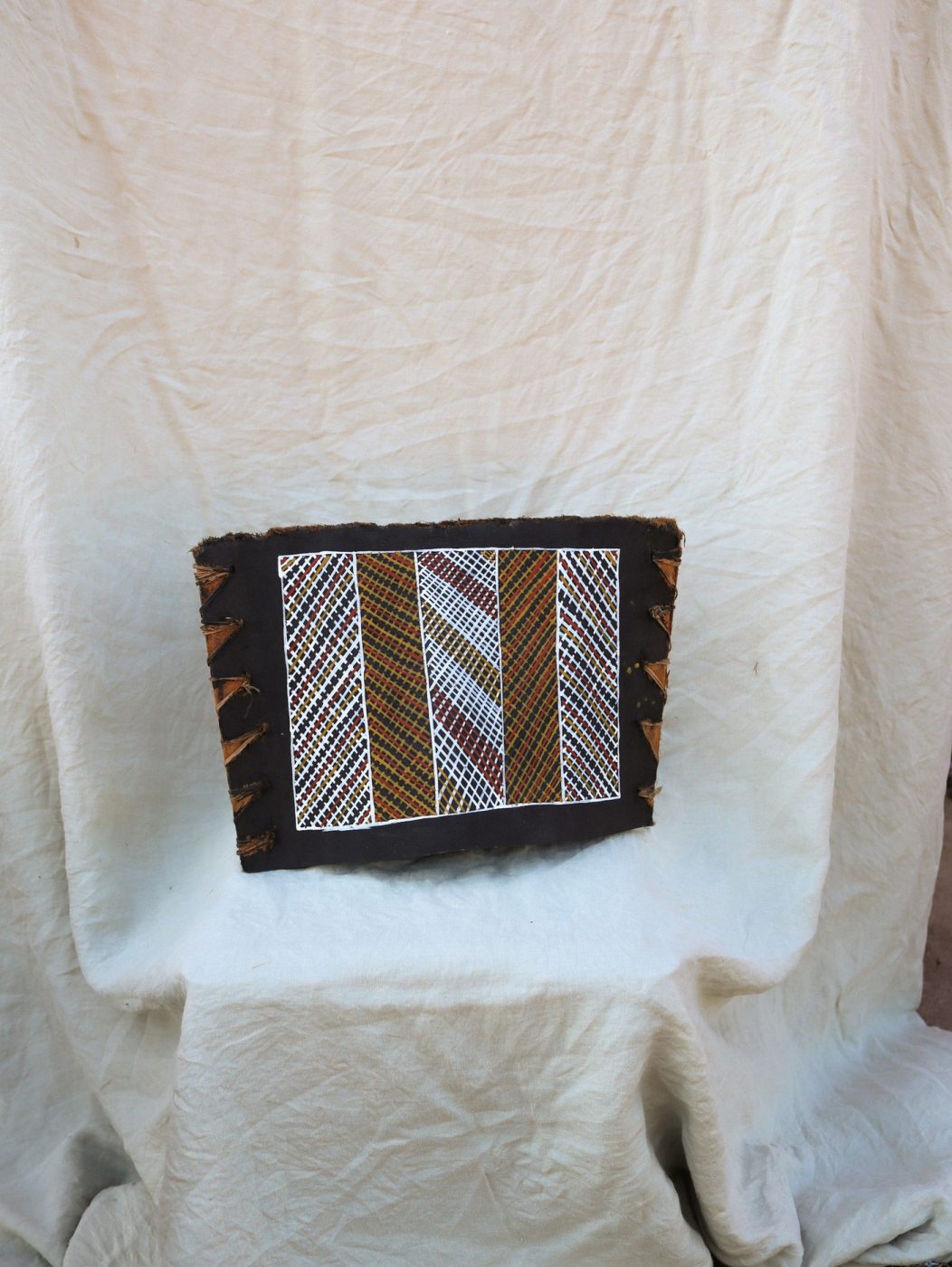Tunga
$505
Tungas, like any artwork on bark are harvested and prepared in much the same manner. The bark is collected in the wet season during Kudjewk (rainy season, Jan-Mar) when the bark around the stringy-bark tree’s are softer and easier to remove. In order to not kill the tree, a straight line will be axed at the top and bottom section of a straight tree, and then removed 3/4 of the way around in order to not ring the tree. Whilst the bark is wet, the artist will heat the bark over flame in order to bend and contort the bark to artists’ desired shape. In this case for Tungas, they will be bent into the shape you see it is now, by sewing in bush string/bark to the edges and then a stick is wedged in the middle/inside of the bag, in order to keep its open shape. The Tunga will be dried as such, hence, resulting in the shape you see. Once dried completely, the artist will then sand back and paint as per the artists desire.
Tungas originate from Tiwi Islands where they are used much like dilly bags of the Arnhem Land/Kakadu region, for hunting and ceremony.
You will often see Tungas close to memorials or burials of Tiwi people as a symbol of strong and ceremonial significance.
The Tunga is placed on top of the Pukumani pole during ceremony when someone passes.
